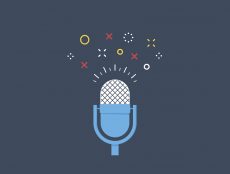
Articles
Technology Alone Isn’t Enough to Spur Change in K-12 Schools
By Hillary Miller
May 17, 2017
Advances in technology are only as powerful as their implementation. In educational technology, this has been an ongoing problem: a vast array of digital tools and eLearning opportunities are available, but teachers often struggle to find meaningful ways to incorporate these tools in the classroom.
A recent survey by Project Tomorrow asked over 38,000 teachers and librarians in more than 7,000 school districts about how technology and eLearning has impacted the way their classrooms run.
Survey Paints a Complicated Picture of Technology in Classrooms
 At a surface level, the results of the survey are not surprising: more than two thirds of teachers report that technology has affected the day-to-day functions of their classroom in a variety of ways, including using cloud based applications, using more videos to teach material, and providing students with access to devices like laptops during class time.
At a surface level, the results of the survey are not surprising: more than two thirds of teachers report that technology has affected the day-to-day functions of their classroom in a variety of ways, including using cloud based applications, using more videos to teach material, and providing students with access to devices like laptops during class time.
Despite these external changes, Project Tomorrow’s survey highlights a widespread issue: the large majority of teachers are failing to take advantage of online learning tools beyond the most basic functionalities.
According to the survey, fewer than one third of teachers facilitate a class blog or forum, use an online curriculum, participate in online professional communities, or use online primary sources in their instruction.
The limited utilization of digital learning in today’s classrooms has further implications: in all of the most important ways, education in 2017 looks much the same as it did a decade ago, or a century ago.
Teachers report that they are most likely to use digital resources to collaborate with other teachers and communicate with parents. There’s no doubt that these tasks are a vital part of a teacher’s job, and it’s encouraging that teachers are utilizing technology to improve these necessary processes. But teachers have always been collaborating with colleagues and communicating with parents. Technology has been used to make existing duties easier, but it hasn’t given rise to fundamental change in the way that many leading figures in education research hoped it would.
The teachers who responded to the Project Tomorrow survey reported that they were least likely to utilize digital resources and eLearning practices in the ways that could have the biggest impact on their teaching: designing personalized curriculum for learners of different abilities, identifying at-risk or exceptional students, creating individualized learning goals, or pinpointing the most successful instructional strategies.
Technology and the access to digital resources has radically transformed nearly every sector of our lives, but K-12 education seems to be lagging behind. While plenty of technological tools have been incorporated into the familiar, well-worn patterns of education, the real potential of online learning has yet to be tapped.
Causes for the Slow Change in K-12 Teaching Practices
Why has the innovative application of digital learning stalled? It’s hard to say exactly what’s causing the bottleneck. In the survey, teachers cited the need for technology support, professional development, planning time, and devices for student use as the most critical factors for improving the integration of technology in the curriculum.
In many ways, these responses parallel the larger problem: requests for professional development and planning time are far from new. Again, these are critical aspects to teacher (and therefore student) success, but they are the same things that teachers have been requesting for decades. We see teachers applying technology to old problems, but not building new frameworks from the opportunities that technology provides.
Less than 25% of the teachers surveyed reported that they would like access to coaching on high impact lesson plan development, curated online resources, online tools for the organization of digital content, rubrics for measuring the quality of digital content, or information on classroom management strategies.
These responses raise a number of important questions. With nearly unlimited digital content, why aren’t teachers more interested in curating and organizing high-quality tools and resources for student use? Why is there so little enthusiasm for coaching on developing lesson plans that utilize technology in profound and innovative new ways, instead of merely as a replacement for pencil and paper? Why, in an era when so many schools have one-to-one programs that provide students with devices like laptops or tablets, aren’t teachers more invested in learning about classroom management strategies to ensure that these devices are educational tools instead of just distractions?
The answers to these questions aren’t immediately clear, but the researchers leading the Project Tomorrow initiative believe that these are the issues that need to be addressed before we see real, systemic change in modern education. The key takeaway from Project Tomorrow’s survey data is that although technology has changed how information and knowledge is dispersed in a myriad of ways, when it comes to utilizing digital resources in K-12 educational settings, there’s still a long way to go.









No Comments